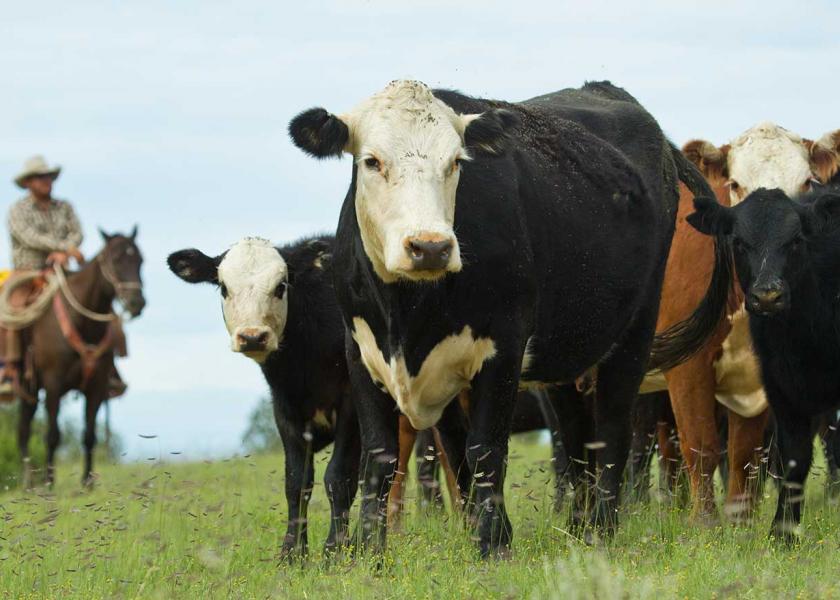Ranch Benefits From Reducing Methane

Rarely a day goes by where some media outlet doesn’t reference the role ruminants play in greenhouse gas (GHG) emissions and the resulting climate change. This media focus is primarily on beef and dairy cattle’s environmental impact, in part, due to larger body weight and greater feed intake but also because few in the general public have any context for ruminant production beyond cattle.
Those who track environmental issues are clearly aware of the nearly daily claims of net zero and carbon neutrality goals proposed by corporations in the not so distant future. Claims made in response to the growing desire for some effort to move the needle in reduction of GHG emissions. Some quick math on the scope and scale of these claims suggest a carbon trading market will likely advance and evolve, offering a place for offset transactions while providing price discovery of climate change mitigation efforts.
This evolution is an example of a technology market pull-through. Create financial incentives to encourage practice changes that in this case sequester carbon or reduce GHG emissions. Early adopters seeking to take advantage of the emerging carbon market continue to evaluate a host of programs intended to document pasture management, crop rotations and feed additives all aimed at offsetting or reducing carbon emissions within and beyond the beef supply chain.
The carbon trading market is the first beneficial thought many consider when evaluating the impact of managing GHG emissions at the ranch. While selling carbon credits may offer future revenue diversification cattlemen may benefit from looking at GHG differently. This alternative approach to GHG management while still emerging is consistent with previous technology evaluations on these pages suggesting ag tech should solve first for operational challenges, then seek to address opportunities rewarded in the marketplace when evaluating return on investment.
A quick review of where feed energy is lost will highlight the opportunity for energy savings at the ranch through GHG management. Recall the energetics of ruminant feeding starts with gross energy, representing the initial available energy (100%) in a feedstuff. The greatest energy loss occurs due to indigestibility, where 30-50% of gross energy is lost in manure. One could argue this loss represents the greatest opportunity for improved energy efficiency in the cow herd using improved forage harvest and storage methods. That’s fodder for another article.
The next loss to what is now digestible energy occurs due to urine, a fairly constant 4-5% from the gross. Gaseous energy losses of 2-12% are also recorded at this step with metabolizable energy remaining. Finally ~15-20% of the gross energy may be lost as heat of fermentation and metabolism. This energy “loss” may be considered a useful adaptation to improve efficiency on cold winter days. Rough math suggests ~40% of a feedstuff gross energy can be used for maintenance and gain.
A recent article in the Journal of Animal Science by Paul Smith and co-workers highlighted a novel method to manage methane and part of the associated 2 to 12% energy loss.
Previously when selecting replacement animals on the basis of reduced daily methane output a related reduction in productivity was observed. Historically, low methane output is associated with low feed intake and marginal performance. Dietary interventions such as high grain diets or ionophores can reduce methane production of the group but an individual animal will still rank differently than their contemporaries as methane production is a moderately heritable trait.
This Irish research team evaluated residual methane emissions (RME), defined as the difference between the predicted and observed methane output relative to intake and performance. The index, while correlated to methane output, was not related to other production traits offering the ability to make selection decisions for methane “efficiency” without indirectly reducing performance.
When cattle were categorized as low RME (desirable) compared to high RME (undesirable) they produced approximately 30% less methane on the 77% concentrate diet regardless when measured as daily methane output, or methane per unit carcass weight or feed intake.
The mechanism behind methane efficiency was also explored in this experiment. Rumen fermentation patterns followed the expected trends toward greater propionate production in low RME cattle and greater acetate and butyrate in high RME cattle. While not conclusive the fermentation patterns suggest further research into the microbial populations is warranted.
While the residual methane emission index is not ready for sire selection catalogues just yet this project highlighted the variation that can exist across the population. Where there is variation there is opportunity to select for improvement. Because methane is an energetic cost to the animal, mitigation solutions in the form of management or selection will benefit us at the operational level while addressing broader environmental goals.







